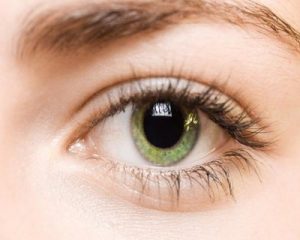- Home
- Editorial
- News
- Practice Guidelines
- Anesthesiology Guidelines
- Cancer Guidelines
- Cardiac Sciences Guidelines
- Critical Care Guidelines
- Dentistry Guidelines
- Dermatology Guidelines
- Diabetes and Endo Guidelines
- Diagnostics Guidelines
- ENT Guidelines
- Featured Practice Guidelines
- Gastroenterology Guidelines
- Geriatrics Guidelines
- Medicine Guidelines
- Nephrology Guidelines
- Neurosciences Guidelines
- Obs and Gynae Guidelines
- Ophthalmology Guidelines
- Orthopaedics Guidelines
- Paediatrics Guidelines
- Psychiatry Guidelines
- Pulmonology Guidelines
- Radiology Guidelines
- Surgery Guidelines
- Urology Guidelines
New instrument lets doctors view the entire eye with unprecedented level of detail

WASHINGTON: Researchers have developed the first instrument that can provide a detailed image of the entire eye. By incorporating a lens that changes optical parameters in response to an electric current, the innovative technology can produce higher quality images than currently available and could make eye examinations faster and more comfortable for patients by avoiding the need to undergo imaging with multiple instruments to look at different areas of the eye.
"Diseases such as glaucoma affect both the front and back portions of the eye," said Ireneusz Grulkowski, whose research team at Nicolaus Copernicus University, Poland, worked with Pablo Artal's team at the Universidad de Murcia, Spain to develop the new imaging system. "An instrument that can examine the whole eye will improve the patient's experience because they won't have to go through imaging with different devices. It might also one day reduce the number of instruments -- which can be quite expensive -- needed in an ophthalmology clinic."
In Optica, The Optical Society's journal for high impact research, the researchers show that their new optical coherence tomography (OCT) imaging system can not only image both the front and the back of the eye, but can also image the interfaces of the eye's vitreous gel with the retina and lens with unprecedented detail. This new imaging capability could allow scientists to better understand how the vitreous gel that fills the eye interacts with the retina and why it can sometimes become detached with aging.
"We also want to use our instrument to measure opacities in the eye's crystal lens and the vitreous to better understand how various parts of the eye affect the deterioration of vision," said Grulkowski. "We believe that the ability to measure these opacities and other properties of the eye that couldn't be examined before will open up many new ophthalmology applications for OCT."
Increasing imaging depth
The new system is based on OCT, which is commonly used to acquire very detailed, cross-sectional ophthalmology images. Most clinical instruments are limited to imaging depths of 2 to 3 millimeters, and it is difficult to switch between imaging the front and back portions of the eye because the eye is composed of elements that bend the light to focus it onto the retina.
To overcome these challenges, the researchers used an electrically tunable lens to build an OCT instrument that could focus light in a way that enabled whole-eye imaging. Unlike standard glass or plastic lenses, which have fixed parameters, the optical properties of an electrically tunable lens can be dynamically controlled using an electric current.
The OCT system also incorporated a newly commercialized swept light source -- a laser that continuously changes wavelength very rapidly. The wavelength-tunable laser improves the resolution and speed of OCT compared to systems that use other light sources. The researchers integrated high-speed electronics to achieve the imaging depth necessary to enable whole eye imaging.
"We incorporated the electrically tunable lens into a custom-made system that represents the latest generation of OCT technology," said Grulkowski. "We set out to show that we could image both the front and back of the eye without changing instruments. However, we were also able to show that our instrument enhanced the image quality of the OCT images."
The researchers used their new system to measure the anatomical characteristics of the eyes of seven healthy people. Measurements calculated using images from the new system correlated well with those obtained with an ocular biometer, the standard clinical device used today.
Next steps
The researchers are now working to optimize the instrument for imaging of the entire vitreous gel, not just where it interfaces with the lens and retina. The vitreous gel has not been studied intensively and is difficult to image because it is highly transparent. The ability to image the entire vitreous could allow OCT to be used to guide procedures that involve the removal of the vitreous gel from the eye, which is sometimes done to repair retinal detachment.
Although the laboratory version of the set-up is ready to use, further steps will be taken to translate the technology to the clinic. The scientists are focused on optimizing the scan areas and developing processing tools for automatic measurement of the dimensions of the eye. These improvements will enable advanced studies of the proposed scan regimes on a group of patients with different types of opacification in the eye.
To read the full article click on the link http://dx.doi.org/10.1364/optica.5.000052

Disclaimer: This site is primarily intended for healthcare professionals. Any content/information on this website does not replace the advice of medical and/or health professionals and should not be construed as medical/diagnostic advice/endorsement or prescription. Use of this site is subject to our terms of use, privacy policy, advertisement policy. © 2020 Minerva Medical Treatment Pvt Ltd